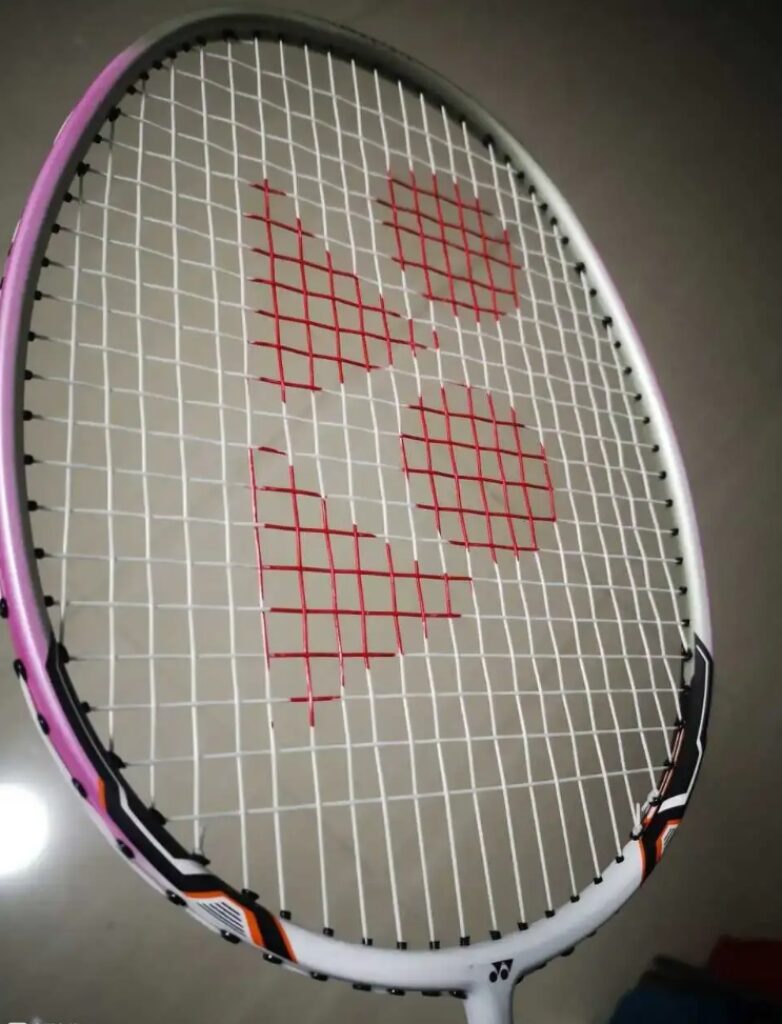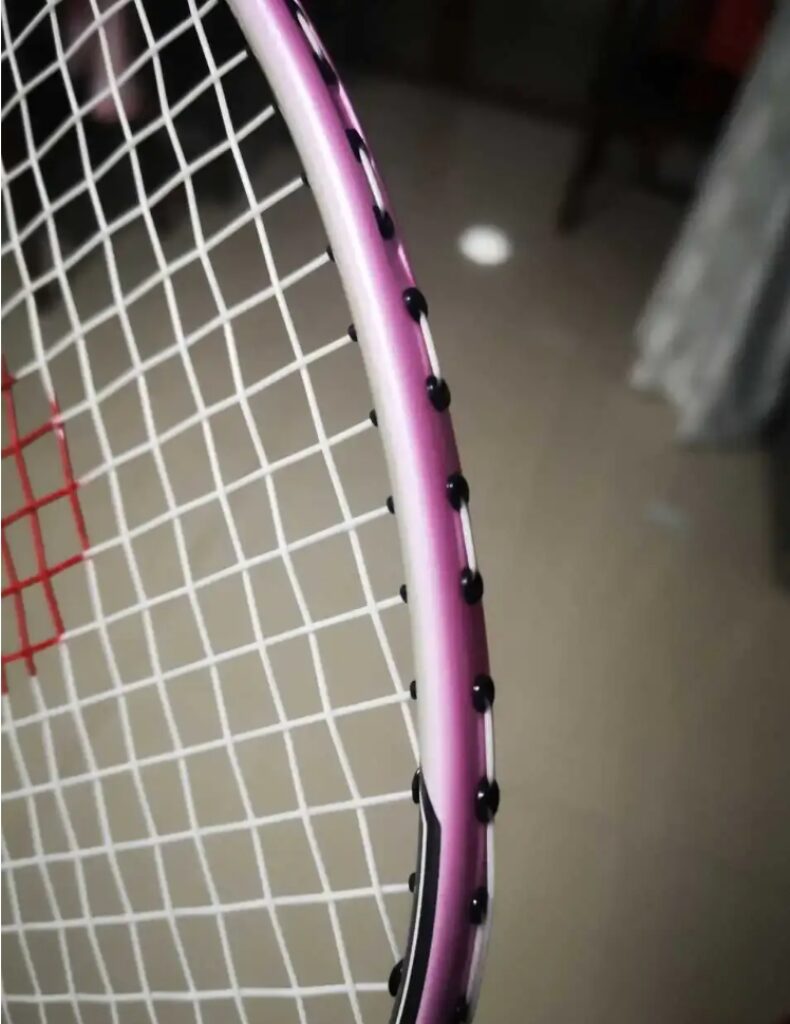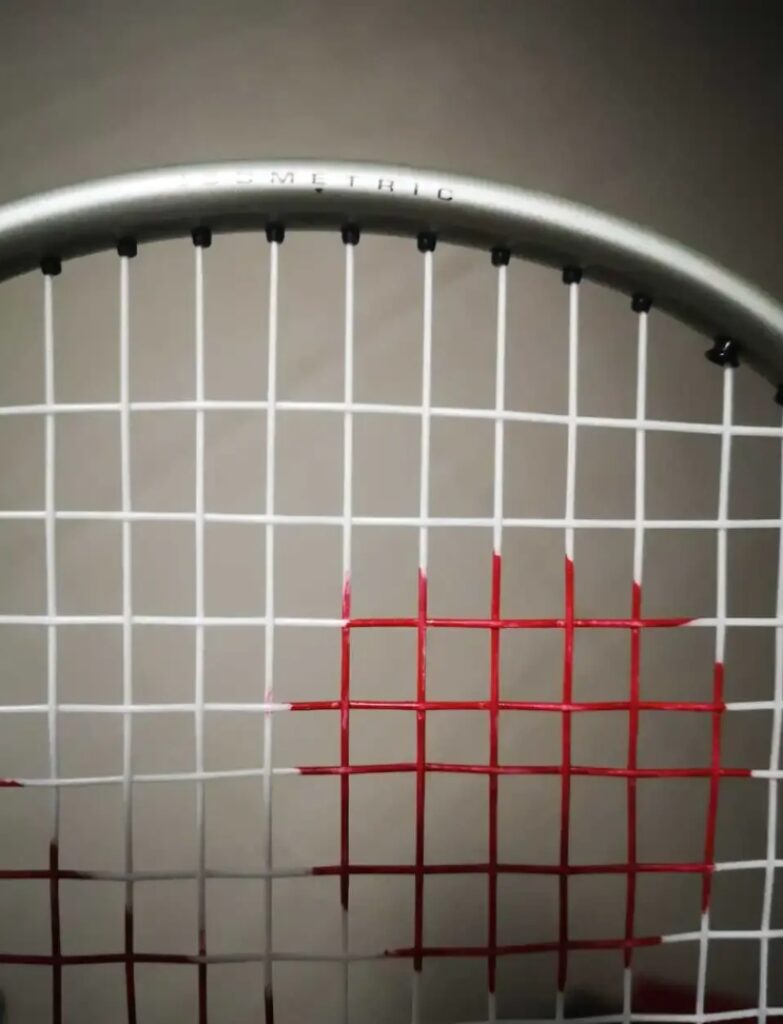The reason why this lower-end racket can be considered worthwhile is mainly due to the fact that it can be obtained for free. Although many might find it less enjoyable to play with compared to a low-end black racket, this NR series lower-end model caught my eye not only because of its appearance but also because, after some research, it seems that YY has invested some marketing and manufacturing effort into this racket. After all, it’s still available in many physical stores, and it appears that the mainland factory is still producing its successor model, the NR8. Moreover, this racket is available in various colors.
Additionally, many players have messaged me asking about the performance of specific models. If you are interested in a racket’s performance, I recommend searching for reviews and discussions in the equipment section of forums, and checking the ratings in equipment databases. As I play casually and do not have access to equipment, it is unlikely I can provide reviews for various popular models without being provided the gear. Therefore, it’s a matter of chance.

Specifications: 3UG5, without cap, fully equipped balance point 298mm, 210mm long shaft, soft adjustment, fluid box-shaped frame, 22lbs unknown string, 24-pound warranty.
The appearance is quite nice. The sakura pink with white to gray gradient gives it a youthful feel. The text on the shaft follows the NR series style, and the racket looks clean and straightforward due to minimal use of technology. However, if any enthusiastic readers could educate me on the signature technologies of the NR series, I’d appreciate it.

As an NR series racket, the D1’s empty swing doesn’t match its speed. The 3U balance is head-heavy, and in hand, it neither feels light nor delivers the sharp speed of a wind-breaking frame. Nevertheless, it feels solid. The slight head-heaviness provides a sense of weight, unlike the plastic feel of some low-end black rackets and some similarly priced Victor and Kason models. Perhaps this is related to the hot-blowing tube technology? If so, the racket should have decent hardness. I’ve seen players with considerable power using this racket in doubles without any damage to it.
The string doesn’t have identifiable markings, and according to a player’s report, this racket was bought with strings in a physical store, probably some type of training string. The feel is around 22 pounds and hasn’t been changed for 3 years, making it quite soft. The shaft is also soft, though slightly firmer than the softest levels of Victor and Kason. During warm-ups and high clear shots, it provides excellent feedback and some feel of shaft elasticity. Unfortunately, due to the poor string, the remaining elasticity is minimal, resulting in a relatively weak performance.

The sweet spot of this racket is quite good, with a large, regular area that is easy to adapt to, embodying the NR series’ characteristics. The box-shaped frame also offers good torsional resistance, with a reasonable directional accuracy. Even with the current string state, it can perform well at the net and handle soft shots effectively. Unfortunately, during mixed doubles, I had few chances to play at the net, so I couldn’t fully assess its error tolerance for small net shots. However, I believe that with new, medium-hard control strings, this racket could be a good entry-level option for net play.
Of course, in mixed doubles, especially when paired with less experienced partners, even if the string condition is not ideal, I had to play the heavy hitter role. The quality of heavy smashes is indeed lacking, with the 24-pound warranty and the soft, less elastic shaft limiting its offensive capabilities. Interestingly, the smashing feel of this racket is smooth, and to me, it feels more comfortable than the previous AX99 Tour LCW, without any unpleasant wooden or vibrating feedback. It’s good for smashing and consistent, and as a 3U racket, hitting 5–6 consecutive smashes doesn’t leave me struggling, providing a bit of the NR900’s shadow.

Flat drives are average, with the long, soft shaft recovering slowly, and the string not producing enough power. In doubles, especially when only I am handling flat drives without my partner’s help, it can be quite challenging. It’s not about wrist strain or slow swing speed, but simply because of the lack of power, including many passive returns hitting the net. It deserves better strings.
The combination of low-end YY, physical store, and pre-strung features in this racket was quite surprising. As an old-model training racket from YY, aside from the shaft quality, the NRD1 provides normal handling and lacks major issues, with a gentle character. While it may not be outstanding, the fact that there is a competitive Yonex product at this price point was unexpected.

Leave a Reply